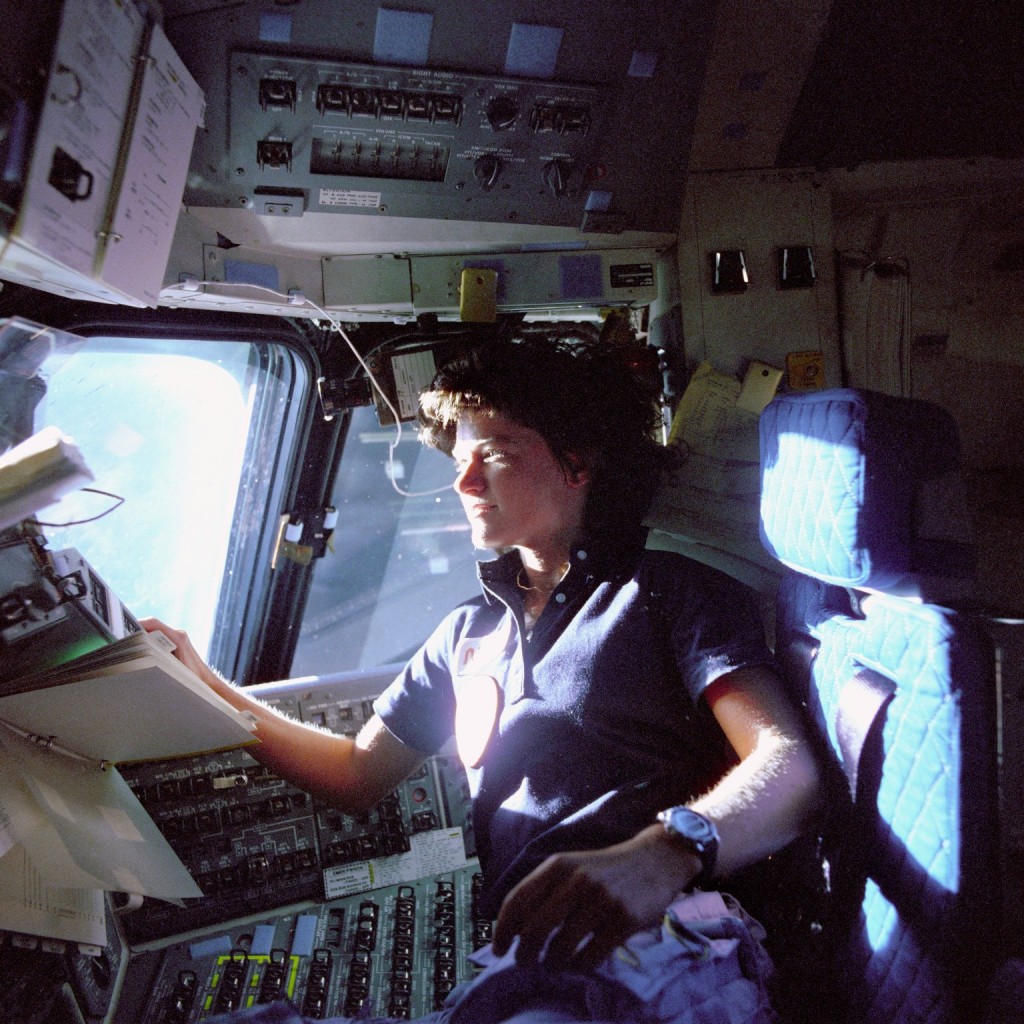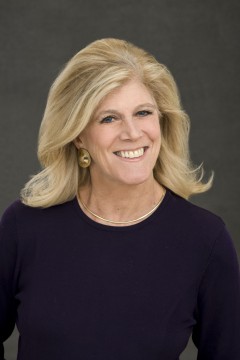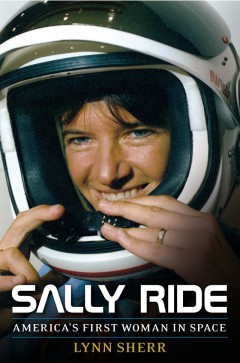
Sally Ride, like Neil Armstrong before her, was an American pioneer who was (understandably) more than a little reluctant about being placed under the media’s microscope. Her unique status as one of the first U.S. women chosen to be an astronaut in 1978 first exposed her to the spotlight’s unforgiving glare, and in 1983 she became a household name when she became the nation’s first woman in space during her STS–7 flight aboard Space Shuttle Challenger. An introvert by nature (also like Armstrong), while she was more than qualified to make that historic first, she was not prepared for the media scrutiny that would follow. Her reluctance to be a “public figure” resulted in many personal sacrifices, the most notable one being that she did not reveal her sexual orientation and long-term relationship with a woman to the public during her lifetime (Ride lost a hard-fought battle with pancreatic cancer in mid–2012). Author’s note: Book spoilers ahead.
Veteran journalist Lynn Sherr, who covered the space shuttle program during its 1980s halcyon days at ABC, was one of the few people who knew Sally Ride not just as an intrepid space traveler, but as a human being. Sherr (who was a journalist-in-space finalist prior to the 1986 Challenger tragedy) gained precious insight into Sally the woman and person, not just Sally the physicist and trailblazer. Her new biography, Sally Ride: America’s First Woman in Space (published by Simon and Schuster), illuminates the professional and personal sides of this very modern pioneer. In this interview, Sherr details the life of a very complicated individual who also happened to break the glass ceiling not just for women astronauts, but also for women (and young girls) in the sciences.

AmericaSpace: In the book, Sally Ride is captured as an extremely complex person who sometimes was a bundle of contradictions (for example, she championed educational initiatives for girls in science, but did not desire to have children of her own, and despite being one of the biggest astronaut household names, was intensely private). As a friend and as a writer, what genuinely surprised you about your subject?
Lynn Sherr: There were three big surprises: The psychic price she paid for her celebrity; her long and grueling encounter with pancreatic cancer; and the fact that she and Tam [O’Shaughnessy, Ride’s longtime partner] had been together for so long. The first was something I’d seen in part—I knew Sally was private, and I knew that she preferred small, personal connections rather than giant public events. But I had no idea how difficult it had been for her to cope. The cancer was a total shock—of course I learned that the minute I got the phone call about her death. But to realize that it had gone on for 17 months, with such an arduous regime, was very sad to me. As for her relationship with Tam: That too makes me sad, from a selfish point of view. I wish I’d been able to share their happiness.
Two more specifics that surprised me: Her seminal role in the Challenger investigation (that she had provided an early, critical piece of evidence pointing not only to the O-rings, but to the flawed and irresponsible decisions by some in management) and her no-fingerprints part in the Columbia investigation (“leaking” the news to a reporter about the test showing there might have been a rescue scenario). What was no surprise to me after all of the research and interviews, was that she emerged from all of this with her integrity intact—still a genuine American hero, with the playful nature that made her such a good friend.
AmericaSpace: Because of her introverted nature and desire to keep her private life private, did you encounter any difficulty chronicling her life? (Her many friends, family, and colleagues seemed to fill in any gaps pretty well.)
Sherr: Oh yes! The combination of Sally-the-introvert (who left few written clues to her feelings and even fewer conversations with friends/family about her innermost thoughts) and NASA, the agency that has traditionally kept astronauts’ private lives very private, made for a daunting task. But over time, both NASA and Sally’s friends and family were wonderfully generous, providing the stories and the documents that helped me to paint the picture of her very complex life. I had to earn her friends’ trust, so that they would open up about the most intimate moments—and they did. I also had the support of Tam, who kindly asked everyone to tell all—no holds barred—in the interest of getting the whole story. And I had some unseen journals and unheard audio tapes that really made Sally come alive.
I think what’s important in all of this is that, with the exception of the things I noted in [the first question], the picture that emerged was of the woman I knew. Yes, there were surprises. But like the high school friend who’d said, “The adult she became was the kid that she was,” the Sally I wrote about was definitely the Sally I knew.

AmericaSpace: Sally’s role as a “First Woman” made her not just a space pioneer, but a societal pioneer. Do you think, despite her reticence about fame, she was comfortable in her status as a feminist icon to many young women?
Sherr: It took time, but yes, I think Sally finally embraced her ability to help young women find their way. She often said that she didn’t join NASA to be a role model; didn’t sign up to be a celebrity. But she appreciated what she’d been thrust into, and she fully understood her responsibility—to NASA, to the nation, especially to other women. Right before she flew, when I asked her if she felt under any pressure, and she answered, “I do feel under pressure—not to mess up.” I knew exactly what she meant. She wanted not to mess up the mission, for her crew, for NASA, for the country, for the future of spaceflight. But she also understood that she couldn’t “mess up” for other women, because if she did poorly, it would be interpreted that ALL women would do poorly; and if she did well, it would bode well for all other women. She did very well, and ever other woman at NASA who succeeded her benefited from that. She also made it possible for women in other professions to say, “If she can do that, I can do anything.”
Sally lived an exemplary life in so many ways, and I suspect part of her privacy, her yearning for a space where no one could intrude, was that so many people (women) were looking at her for so long for guidance. She could handle that, and did it wonderfully, but needed time away from the limelight.
AmericaSpace: Sally was the first (and only known) astronaut to be publicly noted as gay, and kept her sexual orientation (and long-term relationship) under wraps for decades. Do you think this was due to her desire to keep her private life private, or was it her fear of a backlash due to homophobia?
Sherr: First and foremost, she always wanted to keep her private life private. Even when she was married to Steve Hawley [fellow TFNG astronaut], there were no feature articles on “Two Astronauts at Home”—except for the one she authorized from her close friend Susan Okie, just before she flew. But of course, she didn’t try to keep her marriage secret (although the wedding was never announced!). So yes, there was a difference when she was with Tam. As there had been when she was with Molly [Tyson, a previous partner] at Stanford University. And I think there were a few things going on. Sally, despite her iconoclastic tendencies, was also a team player, and knew that society—back then—just didn’t approve of same sex relationships. Especially coming out of NASA, with its military-macho-men-only history. Tam makes it clear that part of it was to protect their company, Sally Ride Science, out of concern that investors might stay away. And she also makes it clear from Sally’s last (and one of the only) statements on the issue—that she was concerned how news of their relationship might affect the Astronaut Office—that she wanted to protect NASA.
Sally publicly championed a number of causes: feminism, science education, saving planet Earth, access to athletics for women. This one just wasn’t there.
AmericaSpace: You knew a side of Sally most journalists didn’t see—the side that wasn’t public, as you were friends. What is your most prized memory of her, and what do you miss most about her?
Sherr: My best memories of Sally are of her playful, mischievous nature. And her ability to let go. Finding her sprawled on my living room floor with her feet up on the coffee table at the end of a long day (when she’d be visiting in NYC and staying with me). Giggling over shrimp and beer at one of the local dives near Clear Lake City. Sharing our exasperation over yet another ridiculous demand from one of our bosses. And that story I tell about the day before launch—when she was the most in-demand person on the planet, about to fly into history. Calling me up at the ABC News workspace and inviting me outside to share a wave and a smile from 25 yards away. That’s the Sally I’ll always remember and that I miss today: a cheery optimist wearing shorts and a t-shirt and flip-flops, grinning in the sunshine. That was my friend.
*****
Sally Ride: America’s First Woman in Space is now available at all book retailers. For more information, check out the book’s page and an accompanying “History in Five” video at the Simon and Schuster website.
Many thanks to author Francis French, Simon and Schuster’s Kate Gales, and, of course, Lynn Sherr for making this article possible.
Want to keep up-to-date with all things space? Be sure to “Like” AmericaSpace on Facebook and follow us on Twitter: @AmericaSpace



